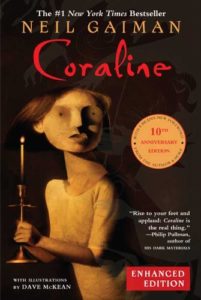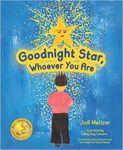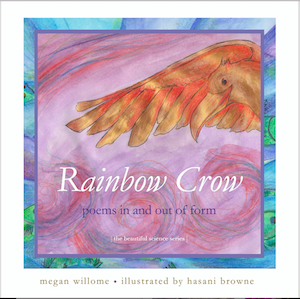
“The cat yawned slowly carefully, revealing a mouth and tongue of astounding pinkness. ‘Cats don’t have names,’ it said.”
A Spooky Story: Coraline
When Neil Gaiman’s daughter Holly was 5 years old, she asked for a spooky story. He started writing one, but it went slowly, sometimes only fifty words at a time. By the time Coraline was finished, Holly was a teenager, and his daughter Maddy was 6 years old. Gaiman gave it to Holly to read, hoping she wasn’t too old for it.
Her verdict? “I don’t think you can be too old for Coraline,” Holly said.
I wholeheartedly agree. Because I first read Coraline as an adult, I found it very scary. Apparently, this is a typical reaction for grownups. In the ebook extra titled “Why I Wrote Coraline,” Gaiman writes, “It was a story, I learned when people began to read it, that children experienced as an adventure, but which gave adults nightmares.”

Coraline is a wise, brave, and tricky girl whose parents truly love her. Sometimes they are busy with work and don’t really listen, and sometimes Coraline is bored because they don’t play as often as she’d like. Worst of all, when her father cooks, he makes recipes (gag!). So when Coraline walks through a door in her house and down a mysterious corridor and encounters a parallel universe with an other mother and other father who shower her with attention, at first she thinks this might be a good thing. But she doesn’t think that for long. Remember, she is wise.
“I don’t want whatever I want. Nobody does. Not really. What kind of fun would it be if I just got everything I ever wanted? Just like that, and it didn’t mean anything? What then?” she asks.
In her adventure to escape from the other father and other mother and return to her sometimes-dull life, Coraline remembers ways her real parents showed her they loved her.
Like when her mother took off the training wheels from her bike, and Coraline had “scabs on top of scabs.” Sure, falling hurt, but learning to ride gave her “a feeling of accomplishment.”
And when she and her father accidentally stepped on a wasp nest, he shouted at her to run away, then ran behind her, absorbing the stings. Once they were safe, they counted: he had thirty-nine stings to her one. More amazing, he didn’t make a big deal of his bravery. He turned it into an object lesson about the moment after the stings, when he went back to the nest to retrieve his glasses, which had been knocked off. Getting stung wasn’t brave, he said.
“But going back again to get his glasses, when he knew the wasps were there, when he was really scared. That was brave,” Coraline said.
Neil Gaiman has written dozens of books, short stories, essays, and comics, and many of his works have been adapted for television and film, including Coraline. He’s won a Newbery, a Hugo, a Nebula, an Audie, and many other awards.
The inspiration for Coraline’s name — which people in the story’s real world, like Mr. Bobo, keep getting wrong, calling her Caroline — was a typo, Gaiman writes, encouraging writers to follow Larry Niven‘s advice to “treasure their typing mistakes.” This is a story about names: about Coraline’s parents, who don’t need any other name than Mother and Father; about Coraline’s cat, who, like all cats, doesn’t need a name at all; and about Coraline, who grows into her own beautiful, brave, unusual name.
It’s Coraline, Mister Bobo,” said Coraline. “Not Caroline. Coraline.”
“Coraline,” said Mr. Bobo, repeating her name to himself with wonderment and respect. “Very good, Coraline.”
Next Month’s Selection
Look up, child! In honor of Children’s Grief Awareness Day, November 18, we will read a sweet picture book, Goodnight Star, Whoever You Are, by Jodi Meltzer. Join us Friday, November 26, for our next Children’s Book Club.
Photo by Reba Spike, Creative Commons, via Flickr. Post by Megan Willome.
Browse more Children’s Book Club
“Megan Willome has captured the essence of crow in this delightful children’s collection. Not only do the poems introduce the reader to the unusual habits and nature of this bird, but also different forms of poetry as well.”
—Michelle Ortega, poet and children’s speech pathologist
- Perspective: The Two, The Only: Calvin and Hobbes - December 16, 2022
- Children’s Book Club: A Very Haunted Christmas - December 9, 2022
- By Heart: ‘The night is darkening round me’ by Emily Brontë - December 2, 2022


L.L. Barkat says
Those button eyes. Shiver!
I loved this story. Happy to see you feature it. 🙂
Megan Willome says
There are many shiver-y things in the story, and I love it more each time I read it.
Michelle Ortega says
I love seeing this here 😊 So far this month I’ve re-read Ocean at the End of the Lane, and I am about halfway through The Graveyard Book (for the third time). Coraline is next.
I didn’t read any of his books until adulthood as well (I wasn’t allowed to read “scary stories” as a child). I love getting lost in his worlds with his companions.
I started off my fall reading with the new Daniel Handler (Lemony Snicket) book, Poison for Breakfast, which gave me lots to chew on from start to end.
Megan Willome says
Ooh, I didn’t know Daniel Handler had a new one.
I, too, didn’t read Gaiman until I was an adult, and I think The Graveyard Book was the first one I read. Never too late!